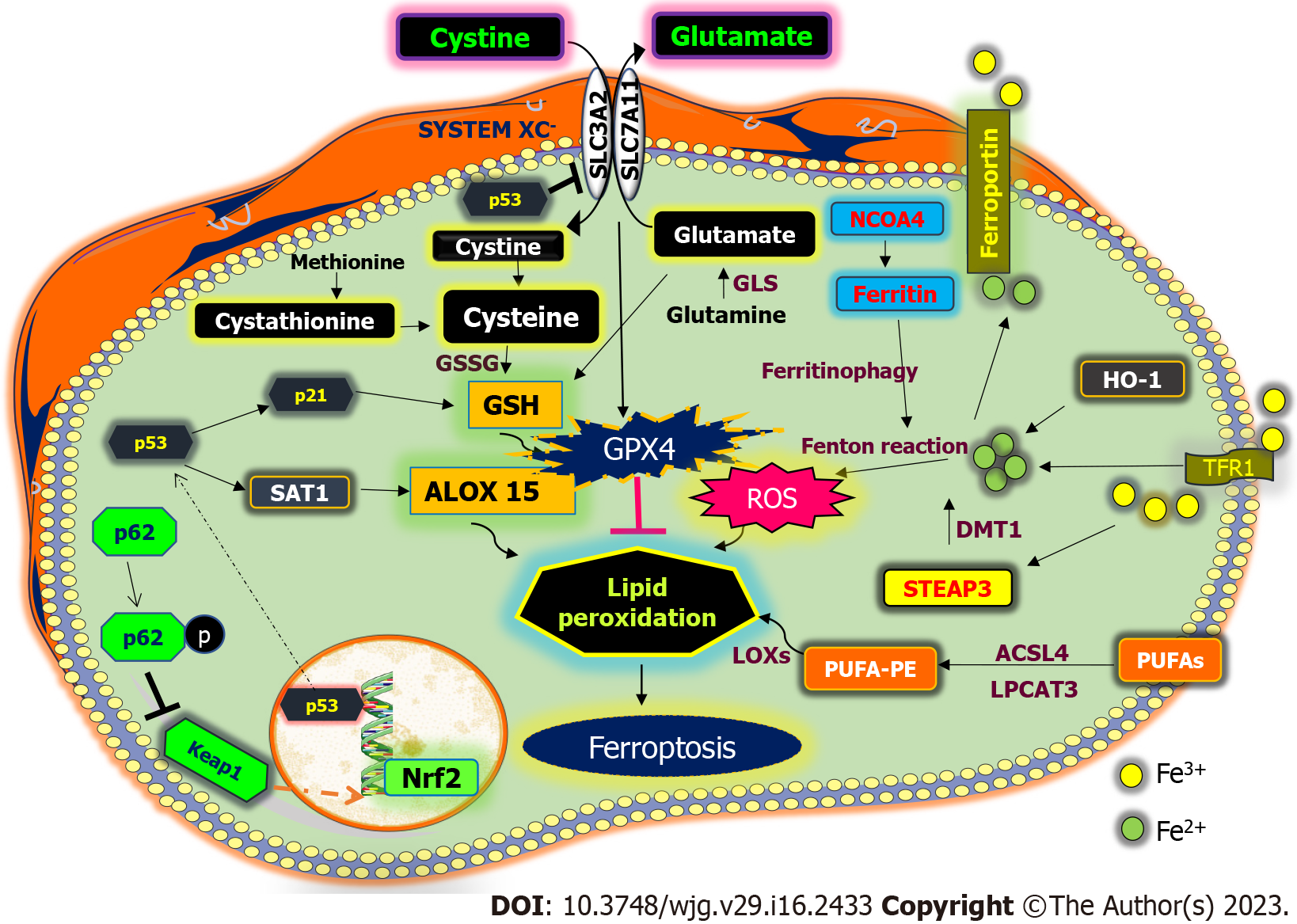Copyright
©The Author(s) 2023.
World J Gastroenterol. Apr 28, 2023; 29(16): 2433-2451
Published online Apr 28, 2023. doi: 10.3748/wjg.v29.i16.2433
Published online Apr 28, 2023. doi: 10.3748/wjg.v29.i16.2433
Figure 1 Mechanistic insights of ferroptosis regulated pathways are represented.
Glutathione peroxidase 4 (GPX4) is central in ferroptosis and works through the initiation of system Xcˉ, which mediates the export of glutamate and import of cystine. Cystine is required for the synthesis of glutathione (GSH). p53 induces the expression of p21 following oxidative stress and further induces GSH leading to GPX4 expression. Alternatively, p53 increases the expression of spermidine/spermine N1-acetyltransferase 1 (SAT1), which serves as the transcriptional target of p53. SAT1 joins ferroptotic pathway through induction of arachidonate lipoxygenase (ALOX) 15 leading to lipid peroxidation. In addition, p62 phosphorylation targets Kelch-like ECH-associated protein 1 (Keap1) leading to accumulation of nuclear factor erythroid 2–related factor 2 (Nrf2) in the nucleus to subscribe antioxidant enzymes during oxidative stress. Acyl-CoA synthetase long chain family member 4 (ACSL4) is an isozyme catalyzes polyunsaturated fatty acids (PUFAs) contributes to ferroptosis through induction of lipoxygenases. Ferritinophagy induction via ferritin contributes to the Fenton reaction leading to accumulation of reactive oxygen species (ROS) and lipid peroxidation. DMT1: Divalent metal transporter 1; GSSG: Glutathione disulfide; HO-1: Heme oxygenase-1; LOX: Lipid oxygenase; LPCAT3: Lysophosphatidylcholine acyltransferase 3; PUFA-PE: Polyunsaturated fatty acid-phosphatidylethanolamine; SLC3A2: Solute carrier family 3 member 2; SLC7A11: Solute carrier family 7 member 11; STEAP3: Six-transmembrane epithelial antigen of the prostate 3; TFR1: Transferrin receptor 1.
- Citation: Rabitha R, Shivani S, Showket Y, Sudhandiran G. Ferroptosis regulates key signaling pathways in gastrointestinal tumors: Underlying mechanisms and therapeutic strategies. World J Gastroenterol 2023; 29(16): 2433-2451
- URL: https://www.wjgnet.com/1007-9327/full/v29/i16/2433.htm
- DOI: https://dx.doi.org/10.3748/wjg.v29.i16.2433









